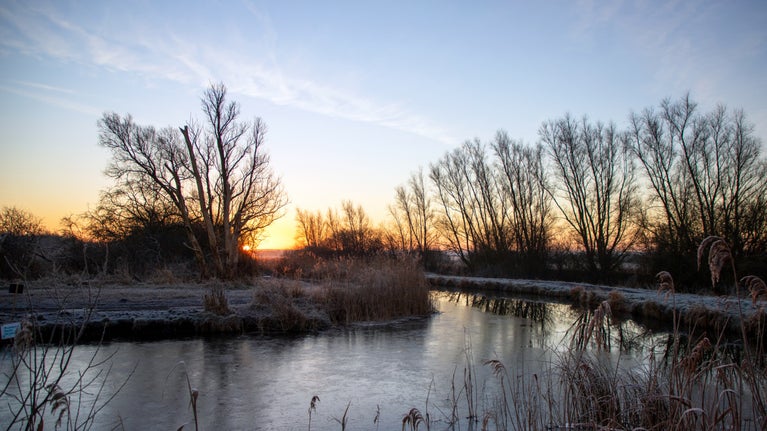
Caring for nature
Learn about our work on nature, climate and sustainability, and find out what you can do to make a difference.


The gardens at Nymans are one of England’s most well-known; important for their varied beauty as well as an extensive plant collection. The surrounding woodland is rooted in history, with ancient oak and beech trees, rare mosses and ferns, cascades, streams and pools, as well as evidence of the iron industry from the 1300s. Our staff and volunteers have been custodians of this special place for a long time and now they’re being tested by the rapid effects of climate change.

We’re planning for a changing climate and have made changes to our gardening practices to take this into account.
The erratic weather over the last two decades is changing the way we approach horticulture. Increased rainfall, higher winds, extreme drought and milder winters are all affecting the original plant collection of the 1890s and early 20th century. Plants under stress are also at risk to pests and diseases and we’re losing important specimens of eurcryphia, nothofagus and rhododendrons. However, we’re constantly looking for plants which are adaptable to our changing climate and are planting for the future with South African, Mediterranean, and Australasian plants.
As conservationists and nature-enthusiasts, it’s our job to ensure nature has the best chance to overcome the threats of today and endure any future ecological changes. I am one of the lucky ones that can work to this end every day and, with the variety of habitats at Nymans, I witness some incredible sights along the way

Climate change is the largest threat to our wildlife and we’re conscious of the impact of our decisions on climate impact. We’re transitioning to electric equipment like electric chainsaws because they not only reduce associated carbon emissions, but also remove other pollutants and reduce noise pollution which may hinder bird calls.
To maintain a thriving, biodiverse woodland, felling is needed to replicate the role of species that have long been extinct, normally due to some sort of human disturbance. Felling produces a lot of ‘waste’ wood, none of which is wasted. Some is processed on site, using traditional techniques, to create fencing, lay hedges or make tree-planting stakes. Some is transported to other NT places that would otherwise not be able to use a locally sourced, low carbon alternative. The rest is left in the woodland as a source of food and a habitat for a range of species. By avoiding burning, we stop these trees re-emitting the carbon they have spent their lifetime storing.
Moving towards the future, we will continue to seek ways in which we can reduce our impact and work with our local and national colleagues to facilitate the growth of resilient and healthy ecosystems.
See what the National Trust is doing to tackle climate change How we're tackling climate change | National Trust If you want to find out more about what we do at Nymans then follow us on @NymansNT on Facebook and Instagram for all our updates.

Learn about our work on nature, climate and sustainability, and find out what you can do to make a difference.
Romantic ruins, intimate gardens and internationally recognised plant collections, all set against a backdrop of the woodland and far-reaching views over the Weald.

Nymans’ ancient woodland is a designated Site of Special Scientific Interest (SSSI), nature reserve and home to a variety of plants and wildlife. Stroll along shaded woodland paths, cool down at the side of the lake and listen to the soothing sound of nature.
